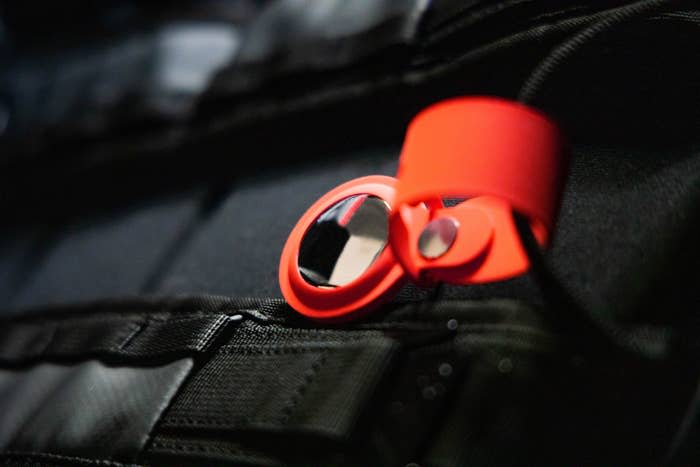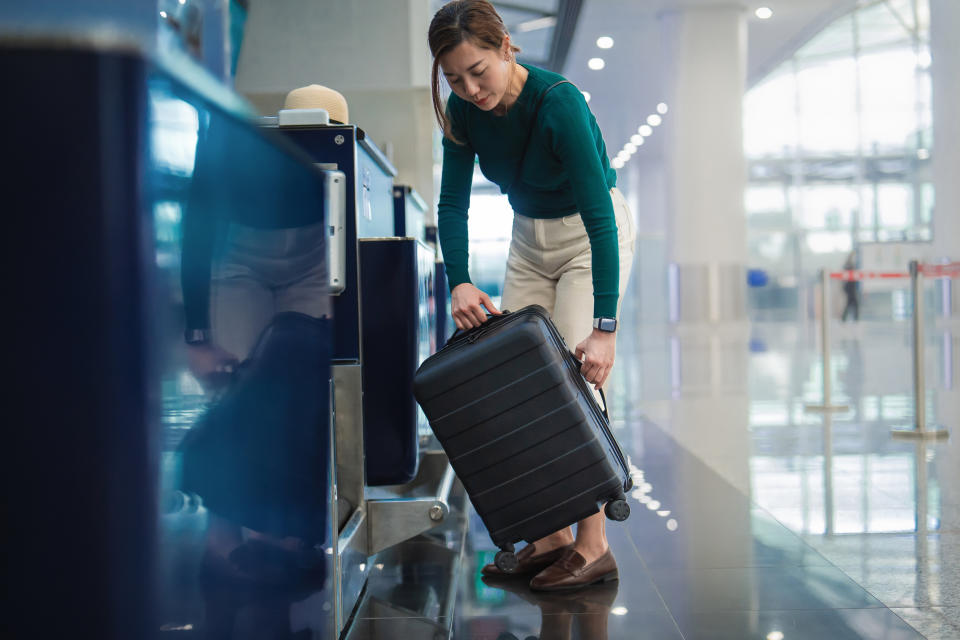Experts Are Weighing In On The Best Things You Can Do To Make Sure Your Suitcase Doesn't Get Lost, And There's One Tip They All Agree On

While convenient, checking a bag at the airport is stressful for a few reasons. First, you have to budget for extra time on each end of your trip (and if you’ve ever traveled with kids or with a group, you know how difficult that is to coordinate). You have to get to the airport early to check your bags, and after you de-plane, you have to wait at the carousel while the people who were savvy enough to only bring a carry-on are already headed home.
Then there’s the situation every traveler dreads most: waiting at that carousel until the very last bag has been picked up, and realizing yours isn’t there. While there are a lot of systems in place to make sure bags don’t get lost during air travel, between missed connections and the fact that we’re all human, it does happen occasionally.
If you have travel coming up and are hoping to avoid this frustrating, potentially trip-ruining scenario, we’ve got you covered. According to travel experts we spoke to, there are a few things you can do to make sure your bag doesn’t end up in another city ― or at least locate it quickly if it does.
Experts No. 1 tip? Use a tracker.

All the travel experts we spoke with agreed: When it comes to keeping track of your luggage, Apple Air Tags or other Bluetooth luggage trackers are key.
In case you’re unfamiliar with these location-tracking devices, Air Tags can be added to items and easily located through the “Find My” app on an iPhone. “These aren’t too expensive and can easily be slipped inside your checked bag, with a custom name made by you in your iPhone’s Find My app,” said Elad Schaffer, CEO of Faye Travel Insurance.
Summer Hull, director of content at the travel website The Points Guy, added that readers of their site are big fans of the Air Tag, as well as luggage trackers the airline may offer. “These trackers allow you to keep track of luggage via Bluetooth or GSM technology,” Hull said.
To be clear, a tracker can’t technically stop your suitcase from getting lost, but it can help you locate it very quickly — potentially helping the airport reunite you with your bag sooner.
Other tips for keeping track of your bag.
Tracking devices can be hugely helpful, but there are also tons of other ways to keep tabs on your bag. They include:
1. Making sure your suitcase is noticeable

Schaffer said that while basic black luggage will never go out of style, it doesn’t exactly stand out in a crowd.
“It’s always good to make sure your suitcase is noticeable when it comes out on the carousel. If you have a basic dark blue or black suitcase like everyone else, try to place a distinguishing piece of decoration on it, like colorful luggage tags, to make sure it stands out and no one grabs it by accident,” he said.
Rocky Trifari, a U.S.-based travel expert and founder of the travel blog The Rocky Safari, also pointed this out. “Make your luggage stand out with a brightly colored strap, ribbon or sticker,” he said. “This helps prevent someone else from mistakenly taking your bag and makes it easier to spot on the carousel.”
2. Removing existing labels from previous trips

If you’re a frequent traveler, you may have a few old luggage tags still on your suitcase from previous trips. If you want to give your bag the best possible chance of making it to its final destination, take them off.
“Remove all existing labels and barcode tags from your previous trips,” Hull said. “You may also want to put a bag tag inside of your bag in addition to the one attached to the outside.”
Trifari said adding a luggage tag with clear contact information can help. “Use a durable luggage tag with your name, phone number and email address,” he explained. “Include a copy of your itinerary inside your bag in case the tag gets lost.”
3. Choose direct flights when possible

It isn’t always possible — or affordable — to choose a direct flight. But when it is, it’s wise to skip the layover if possible.
“Direct flights reduce the risk of your luggage being mishandled during transfers. If you must have a layover, try to allow ample time between connections,” Trifari said.
4. Keep an eye on the printer

Sometimes, a simple printing mistake can be responsible for sending your luggage to a very different destination from where you’re headed. So once your bag label is printed, make sure to examine it carefully.
“Does it have the right airport and code? Your correct name and frequent flyer number? If you qualify for elite and priority tags, make sure they’re added as well,” Hull said. “You should also stay and watch to make sure your luggage is put on the conveyor belt or added to the cart.”
5. Get to the airport early, but not too early

When it comes to air travel, we’re taught that the earlier you get to the airport, the better. And for the most part that’s true — but checking in too early comes with risks.
“If you show up four to six hours pre-departure to check in, luggage might go into a holding area instead of sorted into the area for your flight,” Hull said. If this happens, your bag can get lost more easily.
If your luggage does happen to get lost, it’s important to alert the airline as quickly as possible. “If your luggage is lost, report it to the airline’s baggage service counter as soon as possible. Provide them with a detailed description of your bag and any unique identifiers,” Trifari said. “Sometimes, reaching out to the airline on social media can expedite the process. Many airlines monitor their social media accounts closely and respond quickly to public posts.”
With that in mind, these measures can go a long way when it comes to keeping track of your bag and making sure it gets where it’s supposed to go. Safe travels!This post originally appeared on HuffPost.
